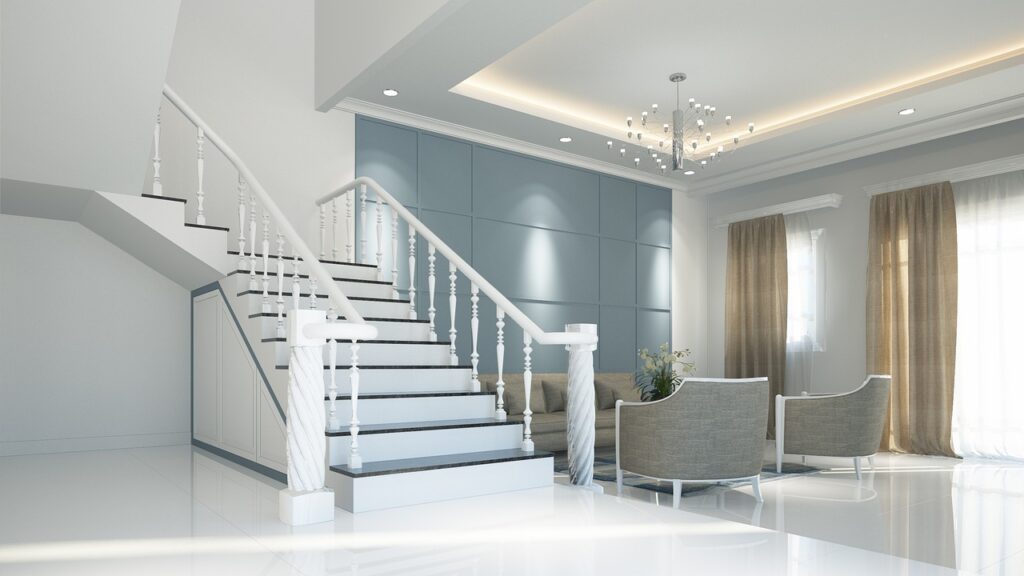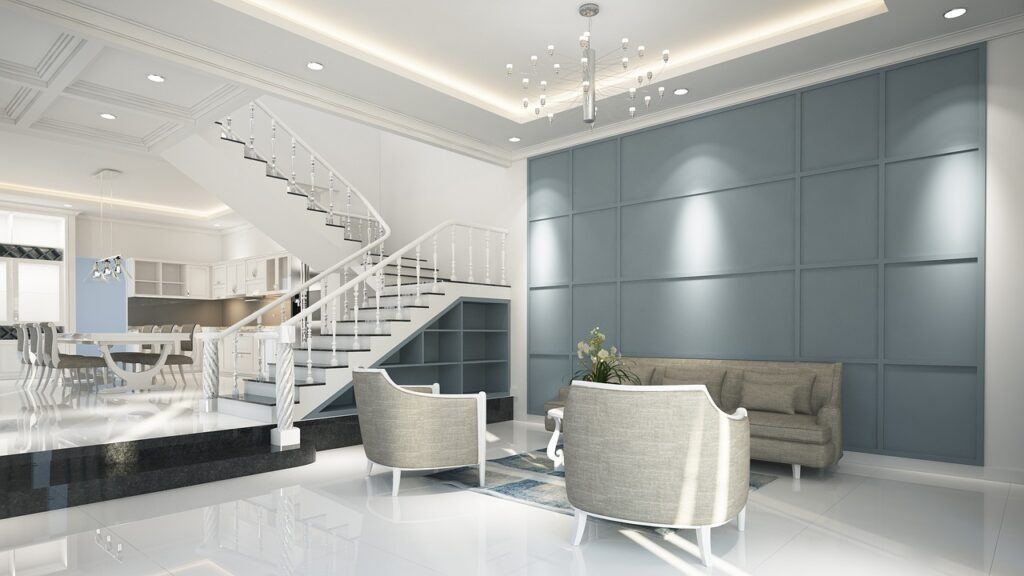Did you know that 70% of construction projects face delays or cost overruns due to poor communication between architects and clients? To ensure your architectural vision comes to life seamlessly, mastering the art of collaboration with your architect is crucial. By understanding how to effectively communicate your ideas, provide feedback, and make decisions together, you can streamline the design process and avoid costly mistakes. Learn how to foster a productive partnership that results in successful architectural plans that exceed your expectations.
Define Project Scope and Goals
Set Clear Project Scope
Define the project scope clearly to ensure everyone understands the objectives and deliverables.
Agree on specific project data that outlines the tasks, timelines, and budget constraints.
Establishing a well-defined scope prevents unnecessary changes later in the project timeline.
Establish Concrete Goals
Outline goals that align with the successful project outcomes you aim to achieve.
Identify key ideas and requirements for the project to set a clear direction from the beginning.
Defining goals helps in measuring progress and ensuring all parties are working towards a common objective.
Clarify Roles and Responsibilities
Clearly define each party’s roles and responsibilities to avoid conflicts during the collaboration process.
Documenting these aspects upfront ensures accountability and promotes a smoother workflow.
Agree on how decisions will be made, who has final approval authority, and how communication channels will operate.
Document Standards in Contract
Detail all standards, guidelines, and expectations in a comprehensive contract to avoid misunderstandings.
Include specifics about design preferences, material selections, and any other crucial aspects of the project.
A well-documented contract serves as a reference point throughout the collaboration, guiding decision-making processes.
Embrace Digital Collaboration Tools
BIM Integration
Architects and project teams can utilize digital tools like Building Information Modeling (BIM) for effective communication. BIM allows for the creation of detailed 3D models that encompass various aspects of a design project. By sharing these models, team members can collaborate seamlessly and integrate different design ideas efficiently.
Virtual Reality Applications
Embracing digital collaboration tools involves leveraging technologies like virtual reality (VR) to enhance project collaboration. VR enables architects, engineers, and clients to immerse themselves in the design process, providing a more immersive and interactive experience. This fosters better understanding among team members and clients, leading to more innovative solutions.
Online Platforms for Coordination
Project teams can also benefit from using online platforms such as Slack for seamless coordination. Slack offers real-time messaging, file sharing, and integration with other tools, streamlining communication within the team. This ensures that all project stakeholders are kept informed and engaged throughout the architectural planning process.
Exchange Feedback Regularly
Seek Feedback
Consistently seek feedback from your architect to ensure the architectural plans meet your expectations. This ongoing communication helps in refining the design and addressing any concerns promptly.
Provide specific feedback Offer specific and constructive feedback to guide the architect in making necessary improvements. Highlight areas that need adjustment or clarification to align the plans with your vision effectively.
Document Feedback Keep a record of all feedback shared during discussions and meetings. Documenting these details ensures that both you and the architect have a clear reference point for future modifications or updates.
Update Team Promptly
Share feedback updates with the entire team promptly to maintain transparency and keep everyone informed about the project’s progress. Timely communication fosters collaboration and ensures that everyone is on the same page regarding the architectural plans.
Navigate Conflicts with Compromise
Listen Actively
Resolving conflicts with architects involves actively listening to their ideas and concerns. By understanding their perspective, you can find common ground.
Architects may propose design elements that clash with your vision. Listening to their rationale helps in finding a middle ground.
Identify Root Causes
Understanding the problems underlying conflicts is crucial for effective resolution. Pinpointing the root causes enables targeted solutions.
Conflicts often arise from miscommunication or differing expectations. Identifying these issues early on prevents escalation.
Embrace Compromise
Being open to compromise is key to maintaining a positive collaboration. Flexibility in adjusting plans ensures project harmony.
Architectural plans may need adjustments to align with both parties’ preferences. Finding compromises leads to successful outcomes.
Engage in Mutual Learning
Embrace Diversity
Collaborative practice thrives when team members share expertise and diverse thinking. Each individual brings a unique perspective to the table. By embracing this diversity, architects and clients can create more innovative and inclusive architectural plans.
In a collaborative setting, players from different backgrounds come together to contribute their ideas and insights. This blend of experiences leads to a richer creative process, resulting in architectural designs that cater to a wide range of needs and preferences.
Share Knowledge
Effective collaboration is built on a foundation of trust and open communication. Architects should not only listen to their clients’ visions but also share their expertise in the field. Through this exchange of knowledge, both parties can learn from each other, leading to mutual growth and development.
Sharing knowledge is not just about one-way communication; it’s about engaging in meaningful conversations where both architects and clients can learn from each other’s experiences. This reciprocal learning process fosters a deeper understanding of the project goals and ensures that the final architectural plans reflect the collective wisdom of the team.
Celebrate Achievements
Acknowledging and celebrating achievements along the way is essential for maintaining motivation and momentum during the architectural planning process. By recognizing each other’s contributions, whether big or small, team members feel valued and motivated to continue working towards the project’s success.
Architects can showcase examples of successful projects or milestones achieved in previous collaborations to inspire confidence in their clients. This not only builds trust but also demonstrates the architect’s experience and capabilities in delivering high-quality architectural designs.
Review and Assess Progress Together
Evaluate Progress
Architectural projects entail time-consuming phases, demanding a meticulous review of the final design’s strengths and weaknesses. By evaluating the current progress, both parties can pinpoint areas that require attention.
Collaboration with an architect involves a thorough examination of the site plans and design elements. It is crucial to identify any potential risks or shortcomings in the architectural plans to ensure a smooth project execution.
Enhance Collaboration
To enhance future collaborations, it is essential to reflect on the ongoing project’s dynamics. By engaging in open communication and constructive feedback, architects and clients can foster a more productive working relationship.
Technology plays a vital role in modern architectural practices, streamlining communication and enhancing project efficiency. Leveraging digital tools for real-time updates and revisions can significantly improve collaboration outcomes.
Optimize Project Outcomes
Regular progress assessments enable stakeholders to optimize project outcomes by addressing challenges proactively. By acknowledging achievements and discussing setbacks, both parties can strategize effectively for future endeavors.
Involving clients in the decision-making process empowers them to contribute valuable insights and preferences. This inclusive approach fosters a sense of ownership and ensures that the final architectural plans align with the client’s vision for their home.
Efficient Documentation Management
Manage Documentation
Documentation plays a crucial role in the design process, ensuring that all details are accurately captured and communicated. By organizing and categorizing data effectively, architects and clients can streamline their collaboration. Keeping a centralized repository for all project-related documents helps in maintaining clarity and consistency throughout the process.
Record Changes
To enhance collaboration, it is essential to keep records of changes made during the design phase. This includes documenting feedback provided by both the architect and the client. By tracking modifications and updates, it becomes easier to trace the evolution of the project and ensure alignment with the initial vision. This practice also helps in avoiding misunderstandings or discrepancies later on.
Accessible Documents
Ensuring that all team members have access to updated documents is key to effective collaboration. By providing real-time access to documentation, architects can foster transparency and facilitate seamless communication among stakeholders. This accessibility promotes a shared understanding of the project’s progress, allowing for timely feedback and adjustments as needed.
Understand Costs and Timelines
Project Costs
Understanding project costs is crucial for effective collaboration with your architect. By comprehending the financial aspects, you can make informed decisions. Ensure transparency in budget discussions to align expectations.
Monitoring budget allocations throughout the project is essential. Regularly reviewing expenses helps in avoiding unexpected financial surprises. Collaborate with your architect to track spending and adjust plans accordingly.
Project Timelines
Being aware of the timeline is key to successful project management. Establish clear deadlines for different phases of the architectural plan. Regularly communicate with your architect to ensure timelines are being met.
Involving subcontractors in the discussion on timelines is beneficial. Coordinate with subcontractors to synchronize their work with the overall project schedule. This collaboration ensures a smooth workflow and timely completion.
Design Decisions
Aligning design decisions with project schedules enhances efficiency. Discuss design outcomes early on to avoid delays in the final design phase. Engage stakeholders in decision-making processes to streamline design approvals.
Considering various aspects of design during planning is essential. Addressing structural, aesthetic, and functional aspects collaboratively with your architect leads to well-rounded architectural plans. Prioritize clear communication to achieve desired design outcomes.
Foster Clear Communication on Budgets and Schedules
Team Alignment
Ensure all team members are well-informed about project timelines and financial constraints. Transparency is key for successful collaboration.
Discussing the project timeline openly with your architect helps set realistic expectations and ensures timely completion. Miscommunication can lead to delays.
Budget Implications
Openly discussing the budget implications of design decisions is crucial. Changes may impact costs and require adjustments in other areas.
Maintaining a clear line of communication regarding budget constraints helps prevent unexpected expenses and keeps the project on track financially.
Conclusion
You now have the tools to collaborate effectively with your architect on architectural plans. Define your project scope, embrace digital tools, exchange feedback regularly, navigate conflicts with compromise, engage in mutual learning, review progress together, manage documentation efficiently, understand costs and timelines, and foster clear communication on budgets and schedules. By following these steps, you can ensure a successful partnership that results in the realization of your architectural vision.
Take charge of your collaboration journey and implement these strategies to enhance your communication and teamwork with your architect. Your proactive approach will not only streamline the process but also lead to a more efficient and satisfactory outcome for your architectural project.

Transform Your Home with Architectural Plans by Red White & Blue Construction!
Are you planning to enhance your home’s layout in Lafayette, CA? Look no further than Red White & Blue Construction for top-tier architectural plans! Specializing in detailed planning and execution, we customize our strategies to fit your unique needs and vision. Renowned for our expertise in architectural design, we are dedicated to transforming your space into a more stylish, functional, and modern environment. Every project we undertake is meticulously planned and executed to surpass your expectations. Our distinguished reputation throughout the Bay Area highlights our commitment to precision, quality, and the highest standards in every project phase.
At Red White & Blue Construction, we strive to do more than just update your home’s layout; we aim to elevate your entire renovation experience. With our comprehensive planning, transparent pricing, and unmatched customer service, choosing us for your architectural design needs ensures a smooth, efficient renovation journey. Choose Red White & Blue Construction and take the first step towards a more stylish and functional home. Contact us today to get started!
Disclaimer
The materials available on this website are for informational and entertainment purposes only and not to provide advice. You should obtain advice concerning any particular issue or problem from a professional. You should not act or refrain from acting based on any content included in this site without seeking legal or other professional advice. The information presented on this website may reflect only some of the current building developments. No action should be taken in reliance on the information on this website. We disclaim all liability concerning actions taken or not taken based on any or all of the contents of this site to the fullest extent permitted by law.





